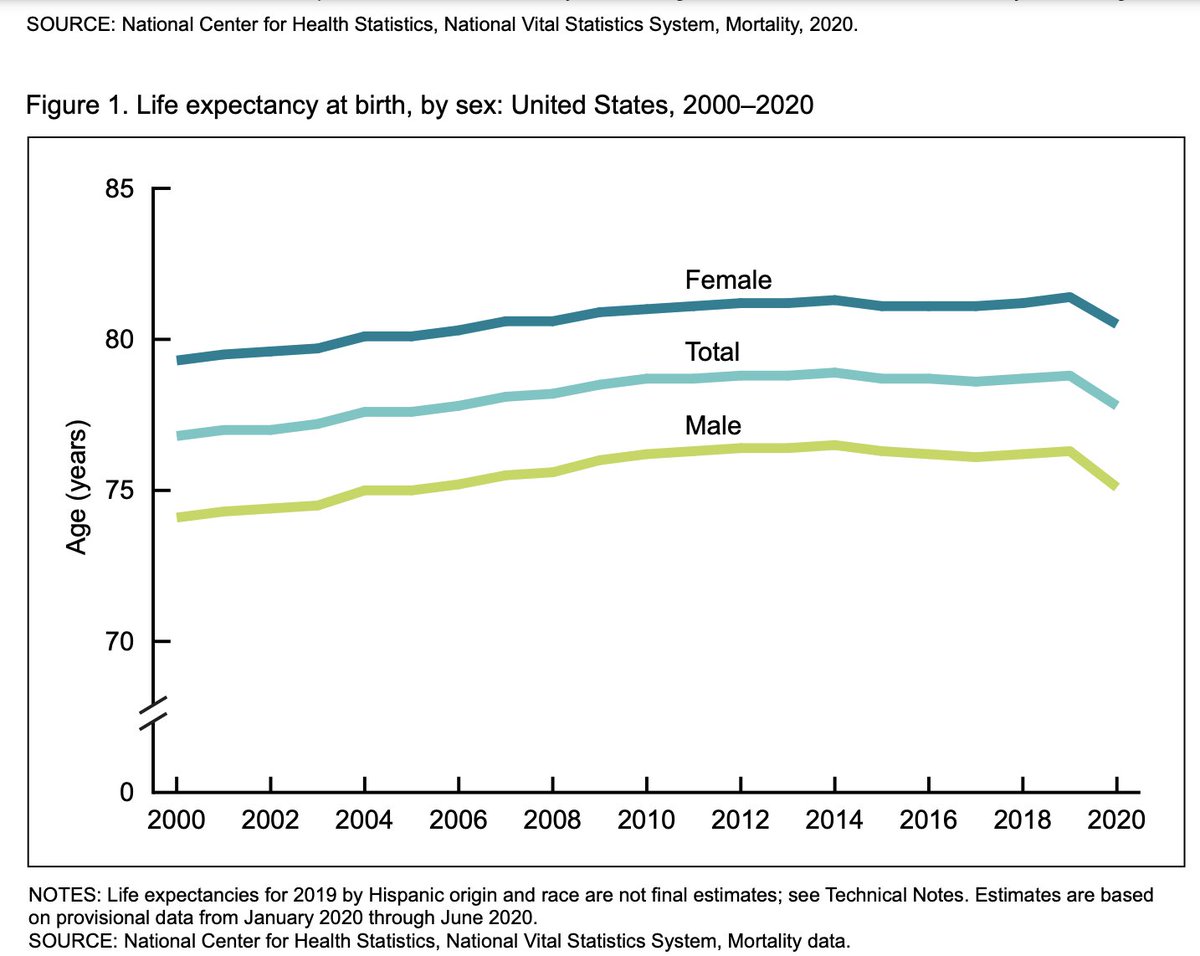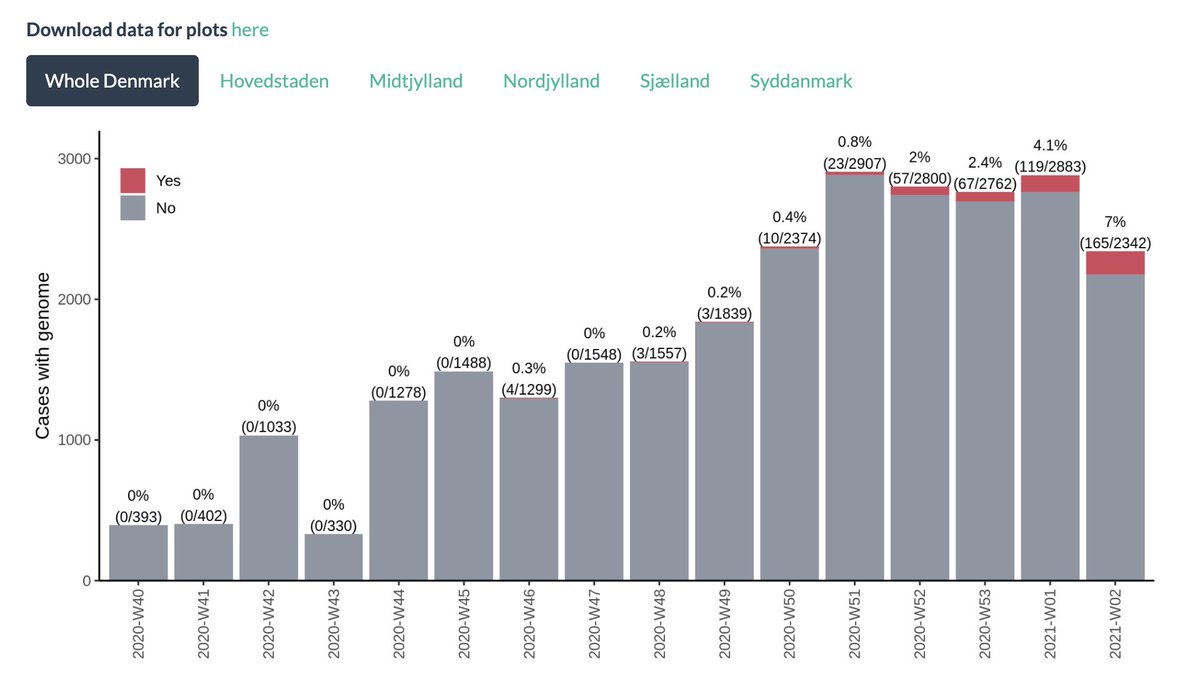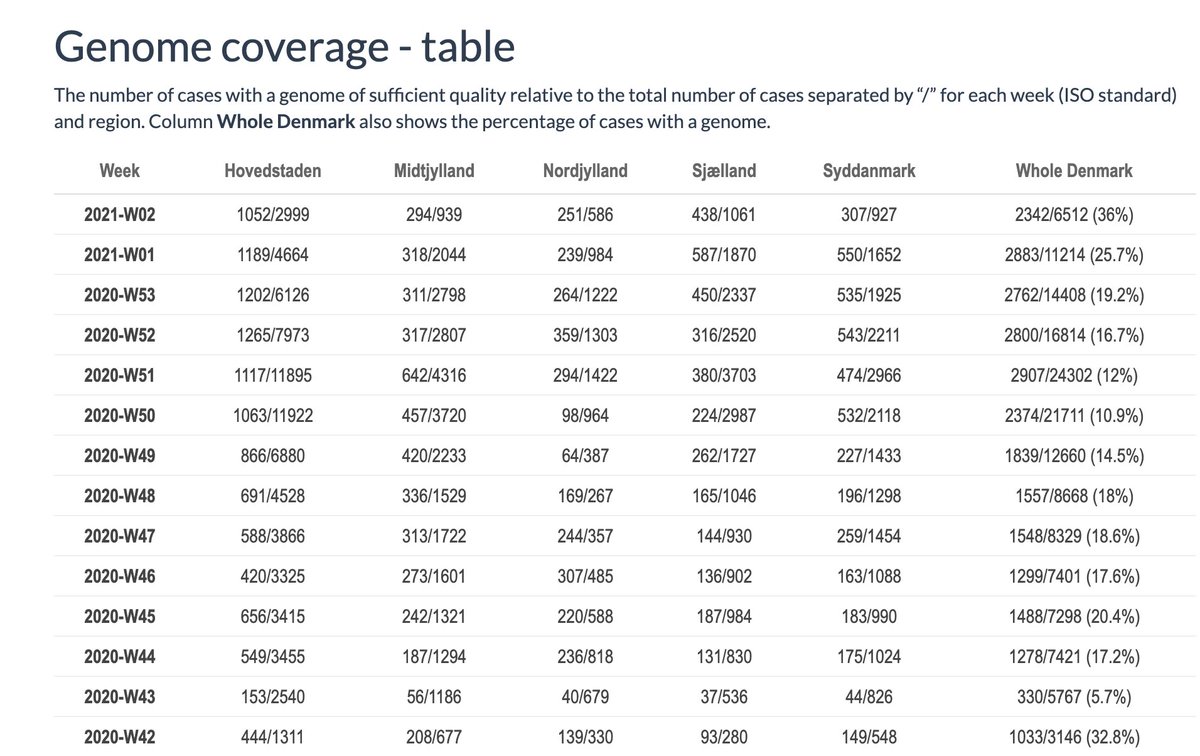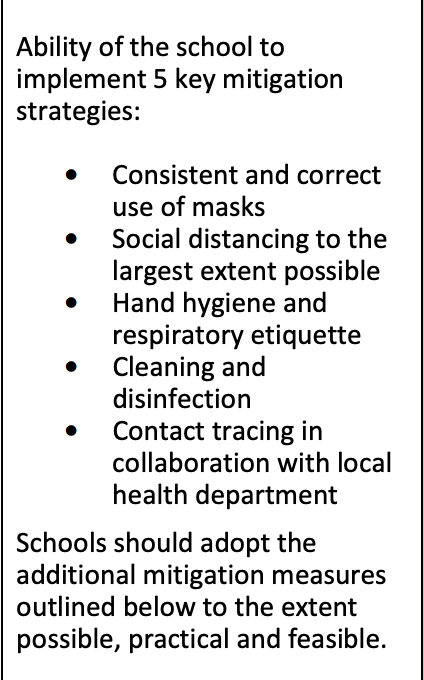
1/ COVID has been a public health catastrophe
500,000 extra deaths, taking an average of 13 years each- 6.5 million years of life lost
That dropped US life expectancy by a full year
Did we erase a decade of progress? Will a child born today live a year less than last year?
500,000 extra deaths, taking an average of 13 years each- 6.5 million years of life lost
That dropped US life expectancy by a full year
Did we erase a decade of progress? Will a child born today live a year less than last year?
2/ At first blush, it can seem confusing.
If life expectancy dropped by a year for 320 million Americans, shouldn't that translate to 320 million years of life lost, not 6.5 million?
OTOH, I trust the CDC. Here's the paper cdc.gov/nchs/data/vsrr…
seems legit. so what gives?
If life expectancy dropped by a year for 320 million Americans, shouldn't that translate to 320 million years of life lost, not 6.5 million?
OTOH, I trust the CDC. Here's the paper cdc.gov/nchs/data/vsrr…
seems legit. so what gives?

3/ Here's some more data- why did life expectancy plummet in 1917-1918 (by 10 years!) then rebound completely?
Life expectancy is the average number of years a group of infants would live if they were to experience prevailing age-specific death rates throughout their life
Life expectancy is the average number of years a group of infants would live if they were to experience prevailing age-specific death rates throughout their life

4/ In other words, if the baby were to live life as if it were the first half of 2020, FOR EVERY YEAR OF THEIR LIFE, they would live to 77.8 years on average (can you imagine a more horrible existence?)
[side note- I would totally read that sci fi novel]
[side note- I would totally read that sci fi novel]
5/ So, when we get past this effing pandemic (and we WILL), then the age-specific death rates should go back to where they were- we have not erased a decade of progress.
And that should also go for the widened racial disparities in life expectancy too
And that should also go for the widened racial disparities in life expectancy too

6/ As my 9th grader put it- if there were an extra 500,000 deaths a year for the next 60 years, then a child born today would have one fewer year of life expectancy, as lived.
This doesn't minimize the catastrophe that is COVID- its to appreciate the miracle of public health
This doesn't minimize the catastrophe that is COVID- its to appreciate the miracle of public health
7/ That also shows how hard it is to ADD a year to life expectancy
Public health has added millions of years of life to born and unborn children over the past century
Through a cleaner environment
Through sanitation
With vaccines
And yes, by attacking smoking, and car safety
Public health has added millions of years of life to born and unborn children over the past century
Through a cleaner environment
Through sanitation
With vaccines
And yes, by attacking smoking, and car safety
8/ I love my mom, and I missed her birthday today.
She lost a sister before her fifth birthday, to pertussis.
A baby girl born in Iran in 1940 had a life expectancy of 27 years. A baby born today can expect 76 years.
Don't take that progress for granted.
Public health 🙏
She lost a sister before her fifth birthday, to pertussis.
A baby girl born in Iran in 1940 had a life expectancy of 27 years. A baby born today can expect 76 years.
Don't take that progress for granted.
Public health 🙏

• • •
Missing some Tweet in this thread? You can try to
force a refresh






